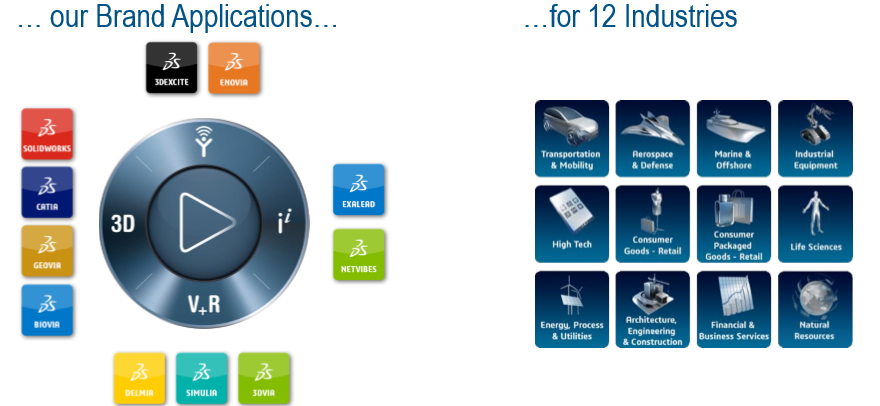PLM Readiness Check for your Organization

- Arun K. Kashyap
- August 29, 2020
PLM Readiness Check for your Organization
During the current challenging times, identifying the right solutions & technologies and adopting them in the organization is arduous and tricky. Moreover, your organization needs to be ready to adapt the changes that the technologies bring into your process, resources, and the work culture. Therefore, your organization must plan ahead before deciding and investing on any software and implementing it. It applies the same for every specific business functions of an organization as well with R&D, Design & Development, Engineering in particular as these are important & core functions of any discrete manufacturing organization across multiple industry verticals.
It is observed that many organizations find it difficult to have a defined process set within an R&D function due to various factors like customer dynamics, unpredictable demands, market changes, product complexities, etc., which leads organizations to look for technologies & solutions that can address these challenges to a major extent. Although ERP and other enterprise solutions are in use in many organizations, the R&D function is left out of this connected ecosystem for some reason and/or limitation of these systems in addressing their challenges. R&D departments still works in a silo with limited connectivity and using legacy or outdated systems like excel, PDM systems, etc.
This led to the evolution of Product Lifecycle Management (PLM) applications specific to R&D businesses (like what ERP is for operations) to address their challenges with a whole lot of configurable solutions within it based on the best practices adopted by successful organizations.
Now, there arise the questions – is your company ready for a PLM solution to help increase efficiency and improve collaboration? What are the steps to be taken before you push the PLM start button?
Organizations have to carry out an assessment or readiness check and understand what is needed out of the PLM system implementation for their business in the near term and in the long term. Below are some of the business drivers which are common and your company may have a few or a combination of them.
- Your company is diversifying and increasing the product variants and so is the production, workflow and data. In this situation, PLM is needed. PLM helps to scale your business as it acts as a central repository of data and manages all the information flow from concept, through production, and end of the product life cycle.
- PLM supports global collaboration and international manufacturing. So, if you are planning to expand your business in international markets, PLM helps you monitor in real-time from anywhere. PLM smoothens your operations and data validation processes and helps you meet quality assurance standards efficiently, which eventually results in an improved brand name. Increased product complexities & design changes with multiple authoring tools in use.
- Improve time to market & contain innovation cycle times thus lowering development cost while delivering more transparent and reliable results.
- Deliver new and innovative products to the market in short cycles at a competitive price to meet consumers demand
- Optimize product costs early in design
- Gain market share by collaborating with customers and suppliers to deliver targeted products quickly
If any or all of the above are your business drivers, it is the right time for an organization to invest on PLM system to remain competitive and profitable and look at a systematic way of approaching it through strategic planning to follow a roadmap that produces tangible results over a period of time in terms of profitability and competitiveness. The following points have to be considered that we recommend to all organizations planning to invest on & implement the right PLM system.
- Form a PLM committee
- Identify your business drivers
- Create AS IS and TO BE business processes
- Identify the right PLM solution
- Form an implementation team
- Introduce Change Management
- Choose the right PLM partner
- Implement PLM Software
- Training Plan
- Test the Software and Go Live
- Measure Success
Once the PLM readiness check is assessed and you have decided to embark on the PLM journey, the primary & most important factor for any successful PLM implementation is selecting the right PLM software & the partner/vendor which undoubtedly requires a lot of investor’s time and energy, but is worth that time. PLM software system will stay with the company for many years, so too will the PLM partner.
EDS Technologies has helped multiple organizations in sizing the requirement and configuring it for multiple customers in India starting from the initial assessment. EDS Technologies is the platinum partner to Dassault Systemes and which is a market leader in PLM solution. It has the right blend of solutions to address end to end requirements for all R&D processes. Below are the set of Dassault Systemes suite of PLM solutions & offerings – industries-specific & process-specific solutions.

Solutions
- Specific Industry Solution Experiences which addresses the below and much beyond:
- CAD-authoring tools integration
- Program & Project management
- Document Management
- Change management
- Bill of Material management
- Variant Configuration
- Collaborative Product Development

- Arun K. Kashyap
- August 29, 2020
PLM Readiness Check for your Organization
PLM Readiness Check for your Organization
During the current challenging times, identifying the right solutions & technologies and adopting them in the organization is arduous and tricky. Moreover, your organization needs to be ready to adapt the changes that the technologies bring into your process, resources, and the work culture. Therefore, your organization must plan ahead before deciding and investing on any software and implementing it. It applies the same for every specific business functions of an organization as well with R&D, Design & Development, Engineering in particular as these are important & core functions of any discrete manufacturing organization across multiple industry verticals.
It is observed that many organizations find it difficult to have a defined process set within an R&D function due to various factors like customer dynamics, unpredictable demands, market changes, product complexities, etc., which leads organizations to look for technologies & solutions that can address these challenges to a major extent. Although ERP and other enterprise solutions are in use in many organizations, the R&D function is left out of this connected ecosystem for some reason and/or limitation of these systems in addressing their challenges. R&D departments still works in a silo with limited connectivity and using legacy or outdated systems like excel, PDM systems, etc.
This led to the evolution of Product Lifecycle Management (PLM) applications specific to R&D businesses (like what ERP is for operations) to address their challenges with a whole lot of configurable solutions within it based on the best practices adopted by successful organizations.
Now, there arise the questions – is your company ready for a PLM solution to help increase efficiency and improve collaboration? What are the steps to be taken before you push the PLM start button?
Organizations have to carry out an assessment or readiness check and understand what is needed out of the PLM system implementation for their business in the near term and in the long term. Below are some of the business drivers which are common and your company may have a few or a combination of them.
- Your company is diversifying and increasing the product variants and so is the production, workflow and data. In this situation, PLM is needed. PLM helps to scale your business as it acts as a central repository of data and manages all the information flow from concept, through production, and end of the product life cycle.
- PLM supports global collaboration and international manufacturing. So, if you are planning to expand your business in international markets, PLM helps you monitor in real-time from anywhere. PLM smoothens your operations and data validation processes and helps you meet quality assurance standards efficiently, which eventually results in an improved brand name. Increased product complexities & design changes with multiple authoring tools in use.
- Improve time to market & contain innovation cycle times thus lowering development cost while delivering more transparent and reliable results.
- Deliver new and innovative products to the market in short cycles at a competitive price to meet consumers demand
- Optimize product costs early in design
- Gain market share by collaborating with customers and suppliers to deliver targeted products quickly
If any or all of the above are your business drivers, it is the right time for an organization to invest on PLM system to remain competitive and profitable and look at a systematic way of approaching it through strategic planning to follow a roadmap that produces tangible results over a period of time in terms of profitability and competitiveness. The following points have to be considered that we recommend to all organizations planning to invest on & implement the right PLM system.
- Form a PLM committee
- Identify your business drivers
- Create AS IS and TO BE business processes
- Identify the right PLM solution
- Form an implementation team
- Introduce Change Management
- Choose the right PLM partner
- Implement PLM Software
- Training Plan
- Test the Software and Go Live
- Measure Success
Once the PLM readiness check is assessed and you have decided to embark on the PLM journey, the primary & most important factor for any successful PLM implementation is selecting the right PLM software & the partner/vendor which undoubtedly requires a lot of investor’s time and energy, but is worth that time. PLM software system will stay with the company for many years, so too will the PLM partner.
EDS Technologies has helped multiple organizations in sizing the requirement and configuring it for multiple customers in India starting from the initial assessment. EDS Technologies is the platinum partner to Dassault Systemes and which is a market leader in PLM solution. It has the right blend of solutions to address end to end requirements for all R&D processes. Below are the set of Dassault Systemes suite of PLM solutions & offerings – industries-specific & process-specific solutions.

Solutions
- Specific Industry Solution Experiences which addresses the below and much beyond:
- CAD-authoring tools integration
- Program & Project management
- Document Management
- Change management
- Bill of Material management
- Variant Configuration
- Collaborative Product Development








